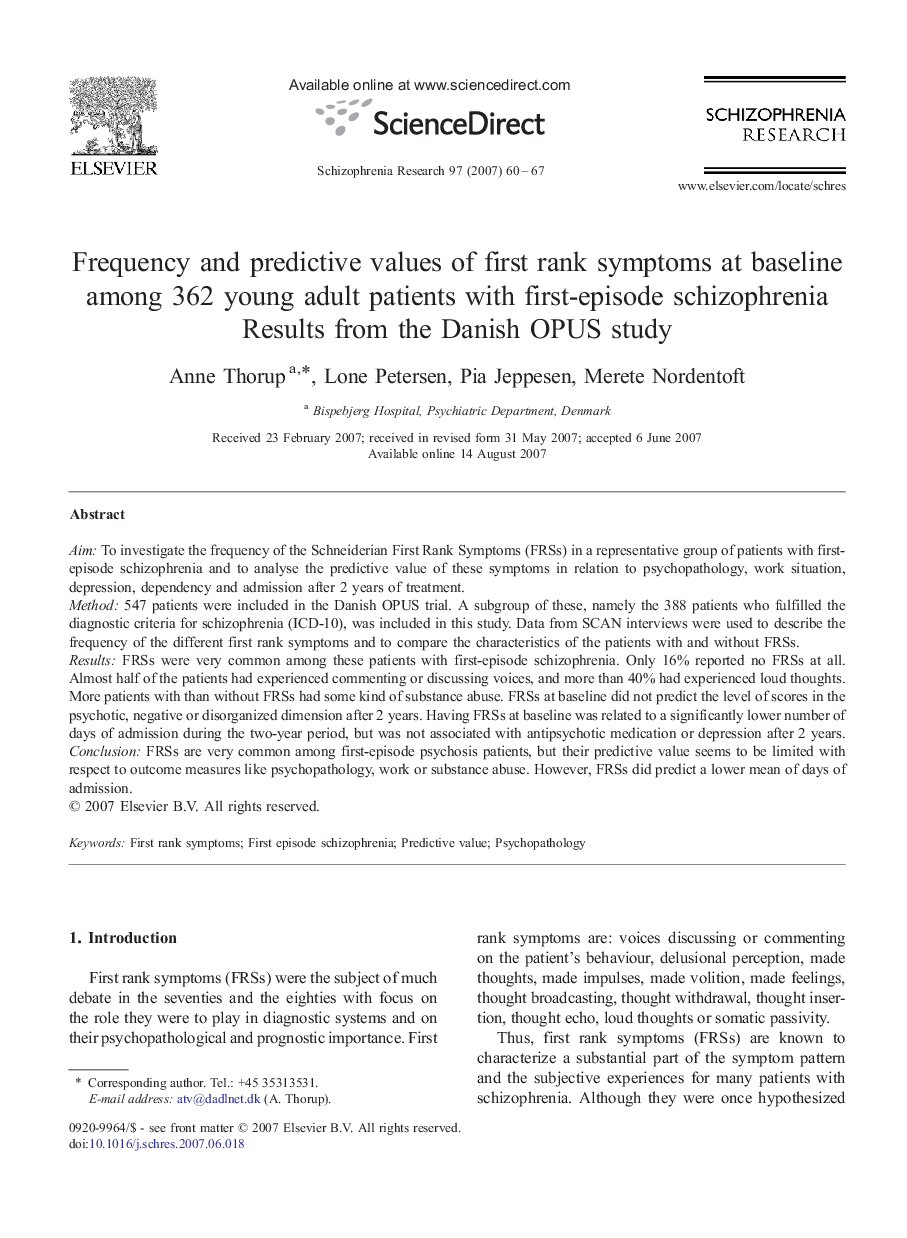| Article ID | Journal | Published Year | Pages | File Type |
|---|---|---|---|---|
| 341984 | Schizophrenia Research | 2007 | 8 Pages |
AimTo investigate the frequency of the Schneiderian First Rank Symptoms (FRSs) in a representative group of patients with first-episode schizophrenia and to analyse the predictive value of these symptoms in relation to psychopathology, work situation, depression, dependency and admission after 2 years of treatment.Method547 patients were included in the Danish OPUS trial. A subgroup of these, namely the 388 patients who fulfilled the diagnostic criteria for schizophrenia (ICD-10), was included in this study. Data from SCAN interviews were used to describe the frequency of the different first rank symptoms and to compare the characteristics of the patients with and without FRSs.ResultsFRSs were very common among these patients with first-episode schizophrenia. Only 16% reported no FRSs at all. Almost half of the patients had experienced commenting or discussing voices, and more than 40% had experienced loud thoughts. More patients with than without FRSs had some kind of substance abuse. FRSs at baseline did not predict the level of scores in the psychotic, negative or disorganized dimension after 2 years. Having FRSs at baseline was related to a significantly lower number of days of admission during the two-year period, but was not associated with antipsychotic medication or depression after 2 years.ConclusionFRSs are very common among first-episode psychosis patients, but their predictive value seems to be limited with respect to outcome measures like psychopathology, work or substance abuse. However, FRSs did predict a lower mean of days of admission.
